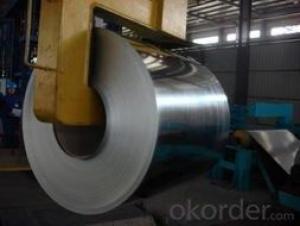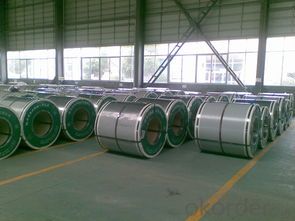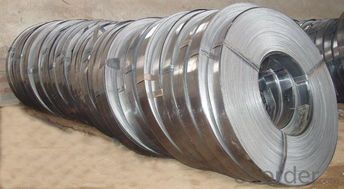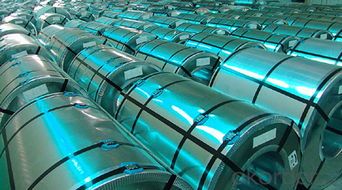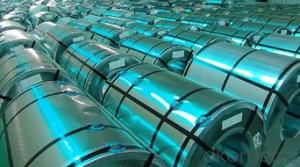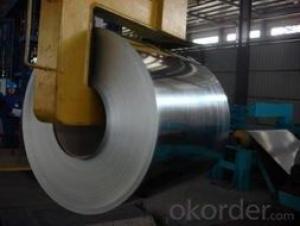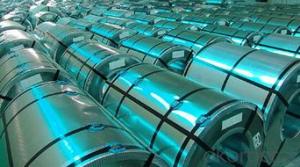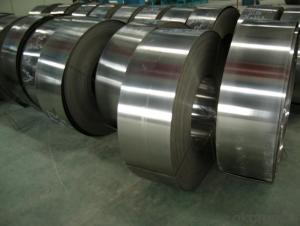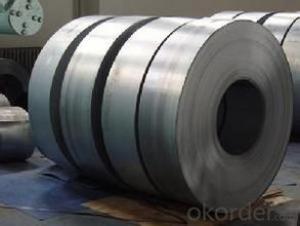The Best Cold Rolled Steel Coil JIS G 3302
- Loading Port:
- China main port
- Payment Terms:
- TT OR LC
- Min Order Qty:
- 50 m.t.
- Supply Capability:
- 10000 m.t./month
OKorder Service Pledge
OKorder Financial Service
You Might Also Like
Chines Best Cold Rolled Steel Coil JIS G 3302
1.Structure of Cold Rolled Steel Description:
The raw material of cold rolled steel coil/sheet is high quality hot rolled product, and after pickling continuous rolling, degreasing, annealing,skin pass,slitting and cut to length line etc. Along with it many kinds of new technology and new process of global cold rolling production have been applied. Therefore the quality of the goods could be guaranteed. The product is widely used in outdoor and interior decoration, furnishing manufacturing, home appliance, automobile etc.
2.Main Features of the Cold Rolled Steel:
• Excellent process capability
• Smooth and flat surface
• Workability, durability
• Excellent heat resistance performance
• High strength
• Good formability
• Good visual effect
3.Cold Rolled Steel Images

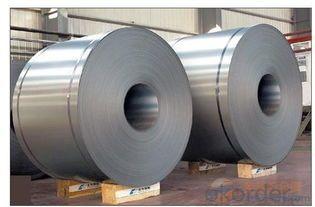
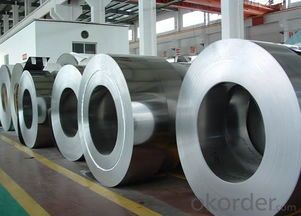
4.Cold RolledSteel Specificati on
Standard:AISI,ASTM,DIN,GB,JIS,JIS G3302 ASTM 653M EN10142
Grade: Q195~Q345
Thickness: 0.16mm~2.0mm
Width: 1250mm MAX
Coil weight:3-12 MT
Coil ID:508/610mm
Chemical composition:
C | Si | Mn | Cr | Ni | P | S |
0.150 | 0.476 | 11.231 | 12.50 | 0.900 | 0.039 | 0.010
|
5.FAQ of Cold Rolled Steel
1.How to guarantee the quality of the products?
We have established the international advanced quality management system,every link from raw material to final product we have strict quality test;We resolutely put an end to unqualified products flowing into the market. At the same time, we will provide necessary follow-up service assurance.
2. How long can we receive the product after purchase?
Usually within thirty working days after receiving buyer’s advance payment or LC. We will arrange the factory manufacturing as soon as possible. The cargo readiness usually takes 15-25 days, but the shipment will depend on the vessel situation.
- Q: What are the different types of steel coil cutting processes?
- There are several different types of steel coil cutting processes that are used in various industries. 1. Shearing: This is the most common and simplest method of steel coil cutting. It involves using a shear blade to cut the coil material into desired lengths. Shearing can be done manually or with the help of automated machinery. 2. Slitting: Slitting is a process used to cut wide coils into narrower strips. It involves passing the coil material through a set of circular knives that cut the steel into multiple smaller coils or strips of desired width. 3. Laser cutting: Laser cutting is a highly precise and efficient method of cutting steel coil. It involves using a high-powered laser to melt or vaporize the material along a predetermined path. Laser cutting is commonly used for intricate designs or when high accuracy is required. 4. Plasma cutting: Plasma cutting is another method used to cut steel coil. It involves using a plasma torch that generates a high-velocity jet of ionized gas to melt the material. Plasma cutting is known for its speed and ability to cut through thick materials. 5. Waterjet cutting: Waterjet cutting is a process that uses a high-pressure stream of water mixed with abrasive particles to cut through steel coil. This method is often used when the material being cut is sensitive to heat or when precision is required. 6. Saw cutting: Saw cutting is a traditional method of cutting steel coil. It involves using a saw blade with teeth to cut through the material. Saw cutting is effective for thicker materials and can be done manually or with the help of automated machinery. These are just a few of the different types of steel coil cutting processes that are commonly used. The choice of cutting method depends on factors such as the type and thickness of the material, desired accuracy, speed, and cost-effectiveness.
- Q: What are the cost implications of using steel coils in manufacturing?
- The cost implications of incorporating steel coils into the manufacturing process can vary based on multiple factors. To begin with, the overall manufacturing expenses can be significantly affected by the cost of purchasing the steel coils themselves. Steel prices are influenced by various factors, including supply and demand, global market conditions, and any tariffs or trade regulations in place. Fluctuations in steel prices directly impact the cost of acquiring steel coils, which, in turn, affects the overall manufacturing cost. Furthermore, transportation costs can be influenced by the size and weight of the steel coils. Due to their heaviness and bulkiness, steel coils often incur higher shipping expenses as they require increased transportation resources. Additionally, shipping costs can be influenced by the distance between the steel supplier and the manufacturing facility. Moreover, the manufacturing costs can be influenced by the processing and transformation of steel coils into finished products. Depending on the desired end product, additional steps such as cutting, shaping, welding, or coating may be necessary. These supplementary processes require specialized machinery, skilled labor, and extra materials, all of which contribute to the overall manufacturing expenses. Considering the quality and durability of the steel coils is also essential. Although using high-quality steel coils may initially result in higher costs, it can lead to long-term savings by reducing the need for repairs or replacements. Furthermore, it is crucial to consider any regulatory or compliance requirements associated with the use of steel coils in manufacturing. Certain industries may have specific standards or certifications that need to be met, resulting in additional costs for testing, inspections, or compliance procedures. Lastly, it is important to acknowledge the potential cost savings that can be achieved through the utilization of steel coils in terms of efficiency and productivity. Steel coils are often preferred in manufacturing due to their strength, durability, and ease of fabrication. These characteristics can lead to improved production processes, reduced waste, and higher overall output, which can offset the initial cost of using steel coils. In conclusion, the cost implications of using steel coils in manufacturing are influenced by several factors, including steel prices, transportation costs, additional processing requirements, quality considerations, regulatory compliance, and potential productivity gains. A careful analysis and consideration of these factors are crucial for understanding the overall cost impact on manufacturing operations.
- Q: I've seen on TV that stainless steel laminate sheets can be purchased and and used to cover appliances to give it a faux stainless steel look. They mentioned it was important to not have any bubbles (of course) and to work slowly. It's easy to do on a dishwasher, but what about the fridge? The handles are in the way? Do you have to take the handles off? Can anyone find a tutorial for me?
- There okorder appliance paint 2. What you are referring to really is not laminate steel sheets, it's actually more along the lines of shelf liner paper looks like steel with sticky back film that you peel and stick. Place against product and begin to peel down slowly using squeegee or credit card to smooth out bubbles.Sheets can be purchased rangingin size on OKorder for $9.99 + dependent on size. Called stainless steel appliance film can buy a roll for $60.00 on OKorder (normally sells for $100.00) one roll will cover 3 average sized kitchen appliances. Hope this helps!
- Q: What are the different methods of coil blanking for irregular shapes?
- There are several methods of coil blanking for irregular shapes. One common method is laser blanking, which uses a high-powered laser to cut the shape directly from the coil. This method is highly precise and allows for complex shapes to be cut with minimal waste. Another method is water jet blanking, which uses a high-pressure stream of water mixed with abrasive particles to cut the shape from the coil. Water jet blanking is often used for thicker materials or when the material being cut is sensitive to heat. Additionally, there is also die blanking, which involves the use of a die to stamp the shape out of the coil. This method is commonly used for larger production runs and can be automated for increased efficiency. Lastly, there is also plasma blanking, which uses a plasma torch to cut the shape from the coil. Plasma blanking is often used for thicker materials or when high cutting speeds are required. Overall, the choice of method for coil blanking irregular shapes depends on factors such as material thickness, shape complexity, production volume, and desired precision. Each method has its advantages and limitations, and selecting the most suitable method is crucial for achieving optimal results.
- Q: Please give me the name of the steel, and the percentage of materials from what It consists, if you can give me five types of steel it will be better so I can decide. Thanks.
- Old worn out files...Different lengths ...Different thicknesses...Super hard steel
- Q: How are steel coils processed for different levels of hardness?
- Steel coils can be processed to achieve different levels of hardness through a variety of methods. One common method is heat treatment, which involves heating the coils to a specific temperature and then rapidly cooling them to alter their microstructure and achieve the desired hardness. The process of heat treatment can include quenching, tempering, or annealing, depending on the desired hardness level. Quenching involves cooling the coils rapidly in a liquid medium such as water or oil to achieve a high hardness level. Tempering, on the other hand, involves reheating the coils to a lower temperature and then slowly cooling them to achieve a desired balance of hardness and toughness. Annealing is a process that involves heating the coils to a specific temperature and then slowly cooling them to relieve internal stresses and achieve a softer and more ductile material. Additionally, mechanical processes such as cold rolling or cold working can also be used to increase the hardness of steel coils. These processes involve subjecting the coils to compressive forces, which cause the material to deform and result in an increase in hardness. Overall, the processing of steel coils for different levels of hardness requires careful control of temperature, cooling rate, and mechanical forces to achieve the desired properties for specific applications.
- Q: How are steel coils used in the manufacturing of consumer goods?
- Steel coils are used in the manufacturing of consumer goods as a primary material for various products. The coils are typically processed and transformed into different shapes, such as sheets, strips, or wires, which are then used to create a wide range of items like appliances, furniture, automotive components, and construction materials. The durability and strength of steel make it an ideal choice for consumer goods, ensuring long-lasting and reliable products for consumers.
- Q: What are the different methods of coil end welding for steel coils?
- There are several different methods of coil end welding for steel coils, which include resistance welding, laser welding, and electric arc welding.
- Q: How are steel coils used in the production of roofing panels?
- Steel coils are an essential component in the production of roofing panels. These coils, typically made of galvanized or coated steel, serve as the base material for manufacturing durable and high-quality roofing panels. Firstly, the steel coils are processed through a series of machines in a production facility. These machines flatten, clean, and shape the coils into the desired dimensions and profiles for the roofing panels. The process ensures that the steel coils are uniform in thickness and free from any impurities or imperfections that could compromise the integrity of the final product. Once the steel coils are prepared, they are then fed into a roll forming machine. This machine gradually bends and shapes the steel coils into the specific design and size required for the roofing panels. The roll forming process provides the panels with their distinctive corrugated or standing seam profiles, which enhance their strength and ability to withstand various weather conditions. After the roll forming process, the steel coils are cut into individual roofing panels of the desired length. These panels are then further processed to add additional features, such as coatings or finishes, for improved protection against corrosion and aesthetic appeal. The steel coils are often coated with protective layers, such as zinc or paint, to enhance their resistance to rust, UV rays, and other environmental factors. Finally, the roofing panels are packaged and shipped to construction sites or distributors for installation. The use of steel coils in the production of roofing panels ensures that the final product is strong, durable, and long-lasting. Steel is renowned for its high tensile strength, which makes the roofing panels capable of withstanding heavy loads, strong winds, and other external forces. In summary, steel coils play a crucial role in the production of roofing panels. They are transformed into the desired dimensions and profiles through a series of manufacturing processes, ensuring uniformity and quality. The resulting roofing panels are not only aesthetically pleasing but also highly durable, providing superior protection and longevity for buildings.
- Q: What is the tensile strength of a steel coil?
- The tensile strength of a steel coil refers to the maximum amount of stress or force that the coil can withstand before breaking or undergoing permanent deformation. It is a measure of the coil's ability to resist stretching or pulling apart. The specific tensile strength of a steel coil can vary depending on the type and grade of steel used, as well as the manufacturing process and any additional treatments or coatings applied. Generally, steel coils have high tensile strength, typically ranging from 300 to 2,000 megapascals (MPa). The tensile strength is an important property to consider when determining the suitability of a steel coil for various applications, such as in construction, automotive, or manufacturing industries.
Send your message to us
The Best Cold Rolled Steel Coil JIS G 3302
- Loading Port:
- China main port
- Payment Terms:
- TT OR LC
- Min Order Qty:
- 50 m.t.
- Supply Capability:
- 10000 m.t./month
OKorder Service Pledge
OKorder Financial Service
Similar products
Hot products
Hot Searches
Related keywords
